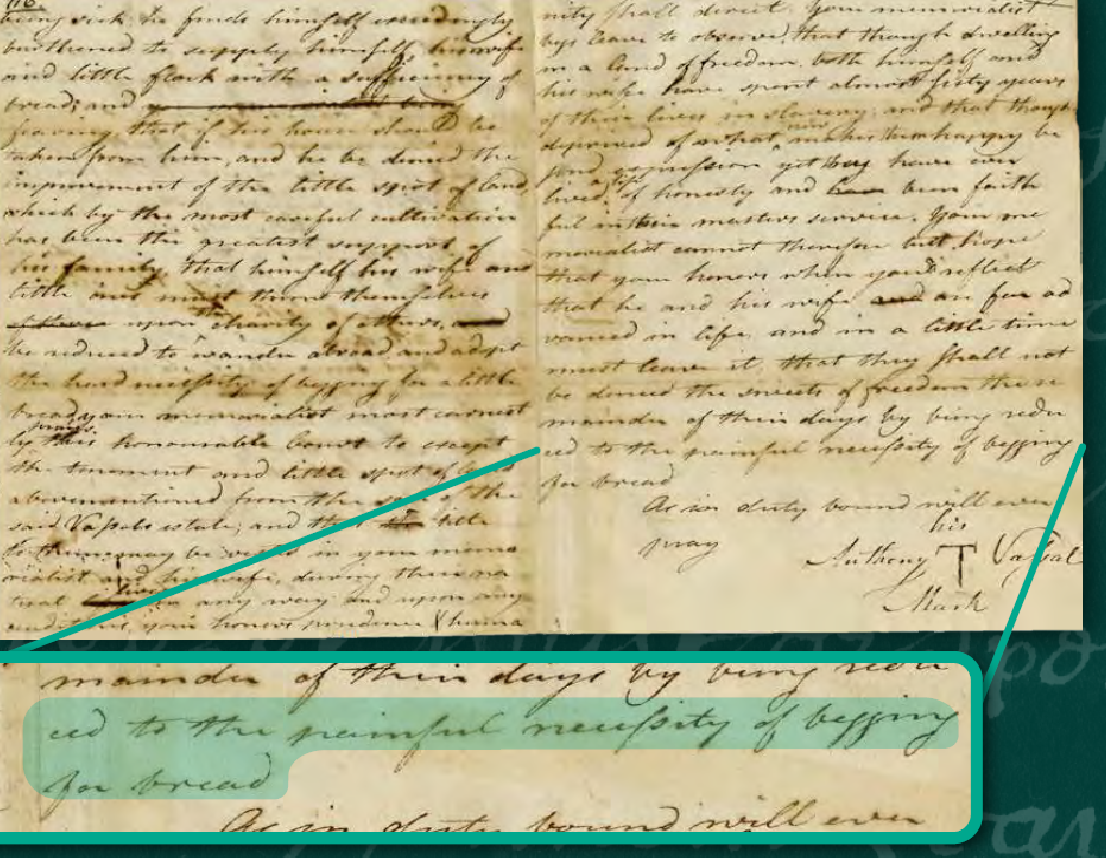During the eighteenth century connections with the Caribbean continued while Massachusetts participation in the Trans-Atlantic slave trade became more significant.
In Massachusetts, treatment of the enslaved ranged from “relatively benevolent to horrifically violent.”
- Historian Jared Hardesty
”
Slavery as a Status Symbol
In the seventeenth century many Puritan families held one or two enslaved people. That continued in the eighteenth century although greater wealth made slavery a status symbol for some. Liveried servants appeared in larger homes. Some accompanied family members on formal carriages. Vassal House
Vassal House - Daderot
Vassall House
The Vassall House on Brattle Street in Cambridge became General Washington’s headquarters during the siege of Boston after its Tory owners fled. Later it was the home of poet Henry Wadsworth Longfellow. It was built with profits from a Jamaica plantation.

Slavery at the
Vassall House
In old age formerly enslaved Anthony and Cuba Vassall petitioned the Massachusetts government for help to avoid “the painful necessity of begging for bread.” Governor John Hancock approved the payment of twelve pounds for each. Massachusetts Archives
The Fate of Toney, 1756
“Toney” was an African man
enslaved in Maine, then part
of Massachusetts.
He endured
severe punishment from an
abusive master. Determined to
end his life, Toney’s religious
training led him to believe that
he could not be saved after
suicide, although repentance
after sin could lead to salvation.
He threw the owner’s five year
old daughter down a well,
confessed to her murder, and
was executed.
By the Numbers
By 1700 there were approximately 800 enslaved Africans in Massachusetts. (By contrast the number was already 16,390 in Virginia.) While the numbers grew in both colonies, lower numbers and changing attitudes made abolition more likely in Massachusetts.
 Belinda Sutton's petition.
Belinda Sutton's petition. - Massachusetts Archives
Enslaved at the Isaac Royall House
“Belinda Sutton” submitted several petitions to the Massachusetts government after the American Revolution. Because of “age and infirmity” she was awarded money from the Royall estate in 1783. In 1788 she complained that “three years” of compensation “is now due to her.”

West façade, Isaac Royall House.
Daderot

Isaac Royall House slave quarters.
- Daderot
